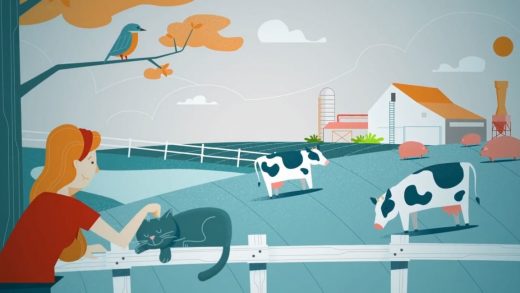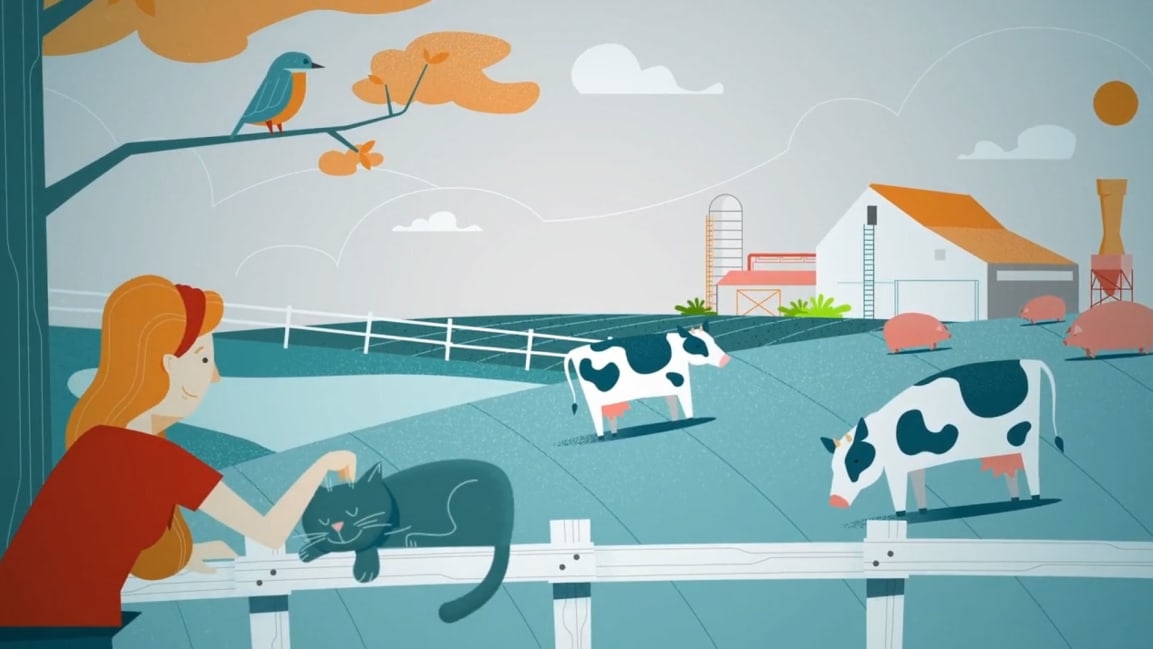If you care about animals, should you should donate to shelters–or to stop industrial agriculture?
The short animated cartoon starts out with an animal-rights activist trying to pass out pamphlets in front of a signboard with a pig on it. Despite his enthusiasm, no one stops to learn more about the welfare of animals on factory farms. In the next scene, a cause group puts up a giant billboard with a cute piglet on it and the slogan: “Help thousands of PIGLETS. Donate to our charity TODAY!”
That message generates more attention. It also makes clear that people putting even a minimal amount of effort toward causes they don’t think about could radically change the way the world works. But sometimes you have to really nudge them.
In fact, the cartoon itself is one big nudge. It was created by the nonprofit animal aid group Animal Charity Evaluators to explain—in as upbeat a way as possible—exactly why farmed animal welfare is such an important topic for animal lovers to consider backing. The short answer: cause prioritization. “Cause prioritization is a systematic way to identify how to make the greatest gains when helping animals,” explains a cheerful omniscient narrator. Simply put, you have limited resources. If you want to learn how to reach as many lives as possible, you should be thinking about how to spend effectively.
As the video explains, that means considering the scale of a problem, how much it’s neglected, and the tractability of the solution you’re backing. For instance, over 100 billion animals are killed for food each year in the United States. That makes the typical eater responsible for about 307 pig, cow, chicken or fish deaths per person. But when most people want to help animals, they often give to companion shelters to rescue dogs or cats.
That’s necessarily a bad thing. In order to take action, donors need to feel connected to the causes they’re backing. However, many people may not realize that for every dog or cat in a shelter there are 37,000 food system animals being confined and slaughtered. The cartoon shows viewers the magnitude of that by cutting to scene with a dog and cat behind bars (that’s sad!), and then zooming out to reveal that they’re in just one cell in a larger cellblock overcrowded with piles of other animals (still sad, but with perspective). The narrator explains how farmed animals receive just 1% of all donations to help animals and the environment.
According ACE’s analysis of historical nonprofit evaluator Charity Navigator data, there are at least 90 animal shelters operating with budgets of at least $3.5 million. The top 10 farmed animal welfare groups account for about $20 million total. “The magnitude of human-caused animal suffering inflicted on farmed animals dwarfs all other categories,” it notes in a statement on its website. “Spending on animal advocacy is highly inconsistent with these patterns.”
That’s not to say that people shouldn’t help cats and dogs. Any money that’s directed at making social change is obviously a good thing. For those paralyzed by the donating decisions process, however, it’s a new kind of logic: An increase of public awareness and outrage could power potentially sweeping industrial and consumer changes. The more people realize there’s a problem, the more likely they might be to add different alternatives to their diet, and push for legislative changes and more corporate accountability around factory farming. It’s a cost-efficient way to improve many things at once.
Fast Company , Read Full Story
(7)



